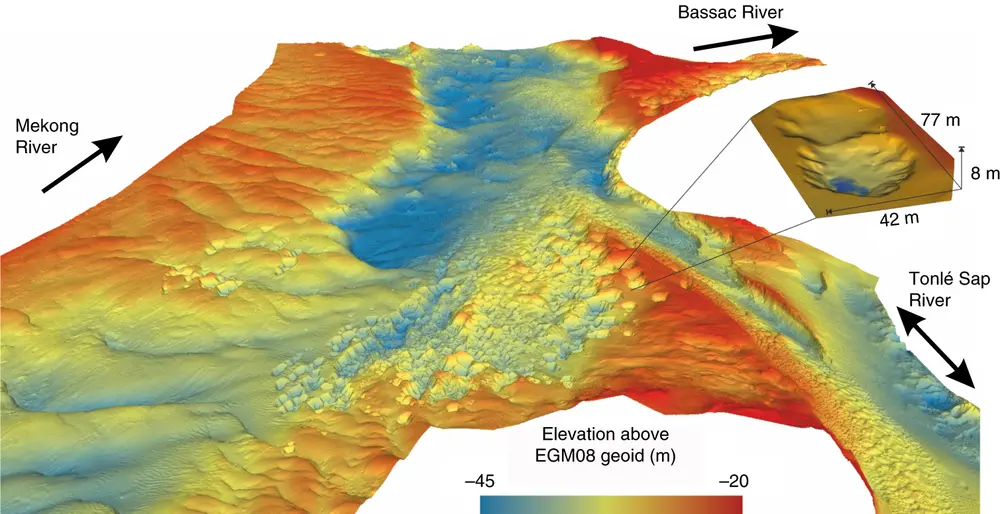
The research quantifies the flux of sand moving down the Mekong River in relation to the quantity being extracted through river bed sand mining. The results reveal that about seven times the natural annual sediment load is being extracted from the lower Mekong River each year, with significant consequences for river bank erosion, infrastructure damage and sustainability of the lower Mekong River and Mekong delta – a region of vital importance for the regional economy and food security.
Our research suggests that on the Mekong, as well as other large rivers subject to excessive sand mining, it is imperative to establish regulatory frameworks that limit extraction rates to levels that permit the establishment of a sustainable balance between the natural supply/storage of sand and the rate at which sand is removed.

The research, with first-author Chris Hackney, was led by the University of Southampton, UK, with the universities of Illinois, Hull and Exeter (UK).
The paper “River bank instability from unsustainable sand mining in the lower Mekong River” is available online
Some press coverage at Phys.org and Environmental News Network